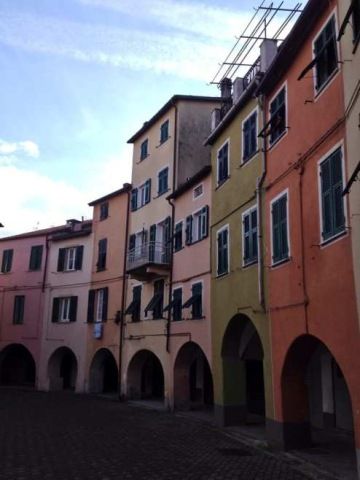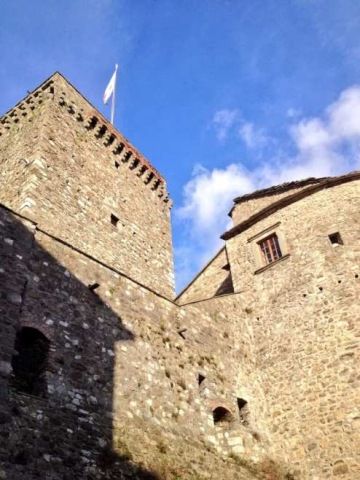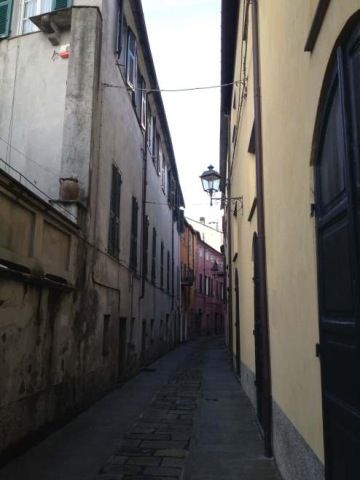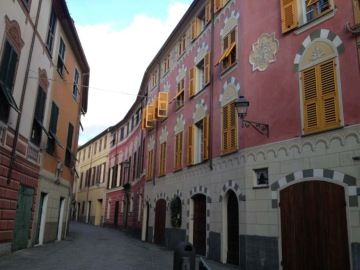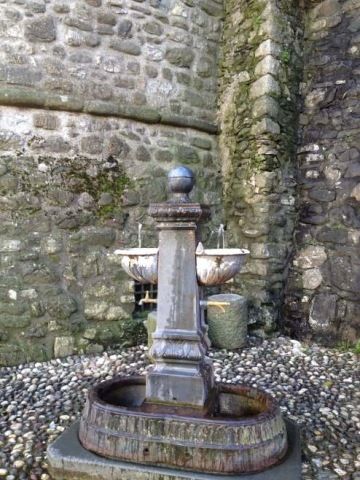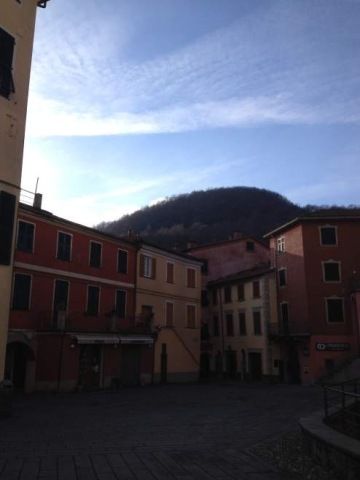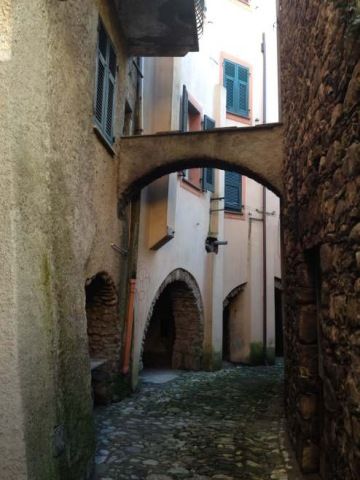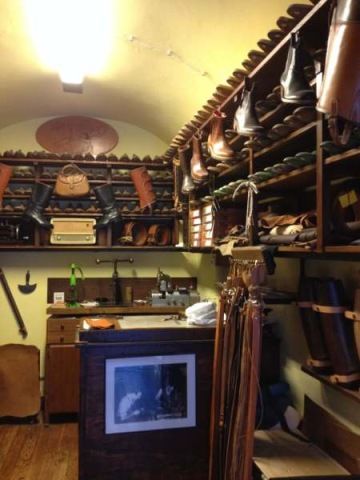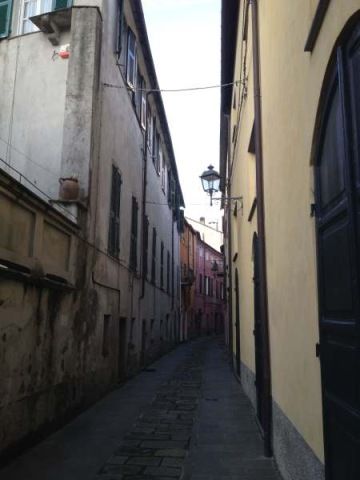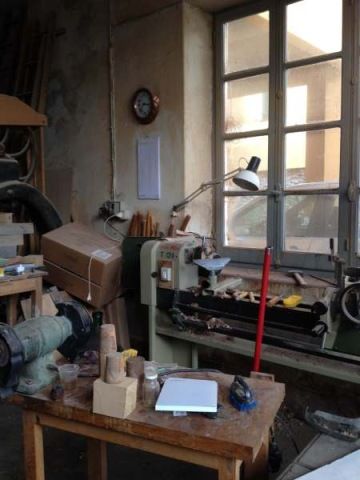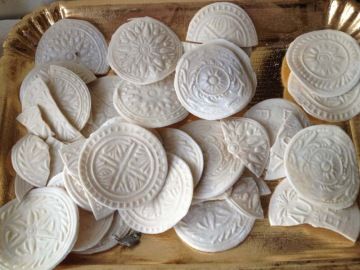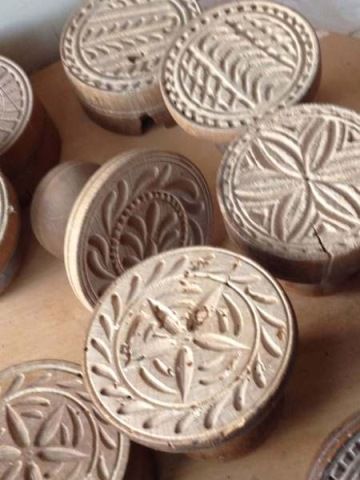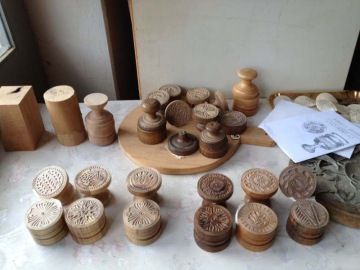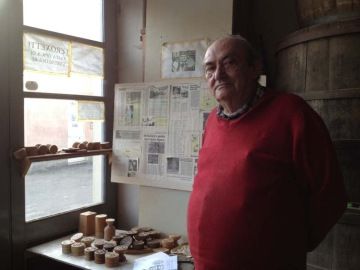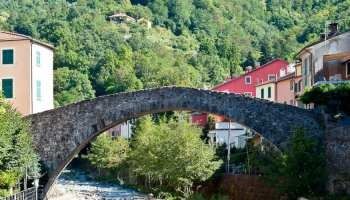
On Sunday, we had a short trip to discover Varese Ligure, the so-called “Borgo Rotondo,” only forty kilometers from Levanto.
One of the “most beautiful villages in Italy,” awarded the orange flag in 2006, is part of the well-known “Organic Valley.” According to Legambiente, Italy’s most ecological municipality, thanks to its wind power station.
A day trip to Varese Ligure
Going there out of season, we were lucky enough to walk through this village practically unchanged over the centuries alone, accompanied only by the sound of our footsteps on the stone pebbles and the pungent scent of burnt wood.
Local history
It dates back to the Byzantine age. Its historical importance was immediately marked by the privileged geographical position, at the crossroads between Genoa, Parma, and La Spezia along the river Vara and then immediately seat of a market trading.
The village was built based on a real settlement project by the Fieschi in the thirteenth century, and that is why even today, we admire the brick houses all identical to each other.
Our visit
Many traces of the history of the village are still visible and valuable. In addition to the topography, which carries with it the various steps from the Byzantine period onward and the medieval village structure still intact.
The Fieschi Castle has an immense value, and it welcomes those who arrive in the village and impresses with its two towers, known as “the Piccinino “and” Manfredo Landi. “
Of Historical importance was also the Fieschi Castle on Mount Tanano, today only a ruin, also because its walls were destroyed to be used as the material of the houses of the Borgo Rotondo.
Remains of the walls are still visible here and there. Still, the core of all it is, without a doubt, the village itself, with its stone houses placed in the ellipse and characterized by arcades and side narrow streets along the perimeter, home to warehouses and workshops of great charm—also very nice the Civic Tower and the Bridge of Grecino.
A curiosity for those who love history and literature like me: in the center is also placed Palazzo Ferrari and in its chapel were was celebrated the wedding between the marquis Domenico Pallavicini and Luigia Ferrari to which Foscolo dedicated his ode “A Luigia Pallavicini caduta da cavallo”.
Calzoleria Marenco
Among many shops that still exist and active, my passion-health for shoes and handbags led me to the threshold of the Calzoleria Marenco, a paradise.
The production is still on demand and custom-made, starting from an existing template or a simple personal idea according to a fashion or satisfying the customer’s personal taste. Everything is done by hand, from the first steps to the last seam, and cleaning and polishing are guaranteed free for life …
I recommend you open the door and enter, just for the charm of this small workshop, the cradle of true art. For fans, you can also see the site of this historic workshop.
The Croxetti
Another shop, in my opinion not to be missed, is that of Pietro Pacetti, a former bank now artisan creator of wooden molds for the “croxetti” or in Italian corzetti.
It is a homemade pasta typical of the area, like a small, round lasagna, decorated with these molds, which reproduce more or less ancient designs, tailored according to dynasty and events to celebrate.
These designs have an aesthetic function, but they hold the dressing, and it seems that the printing pressure does not allow the pasta to overcook. In addition to the very traditional meat sauce or pesto, they are also excellent with the white pesto, made with pine nuts, garlic, and marjoram.
I bought a mold and pinned the recipe. Now I have to wait for the first Sunday of willingness to roll up the sleeves, roll out the dough and crush the pine nuts in a mortar … I will let you know!
